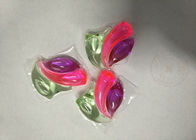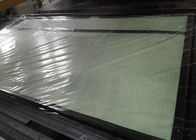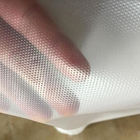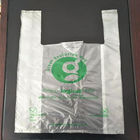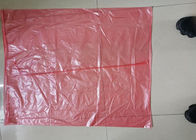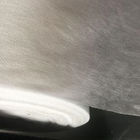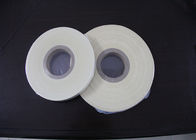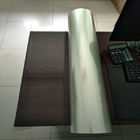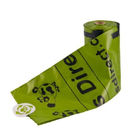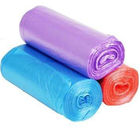Water soluble laundry bags have gained considerable traction recently and for good reason. They offer utility and cut the risk of infection through surface contact or even airborne infections for that matter. But, there should be a certain protocol to be followed when using these bags for them to fulfill the purpose they were designed for. This article will entail a breakdown of everything you need to know about water soluble laundry bags and their usage.
1. What is water soluble laundry bag?
Water soluble laundry bag is specially designed for infection prevention purposes while handling or washing contaminated clothes. It is 100% biodegradable that does not clog the pipes while you are washing the clothes. Hospitals and other care institutions are actively incorporating water soluble laundry bags as they are a valuable means of preventing cross-contamination. Once filled with contaminated clothes, you put water soluble bags in the washing machine directly. The bags are made up of polyvinyl alcohol films that completely dissolve in the water while the clothes are washing. It is the most cost-effective and hygienic way of saving yourself and your environment from getting any infectious disease.
2. Is it harmful to marine life, human beings and the enviroment?
Although not meant to be consumed or ingested by the human body in any form, water soluble laundry bags are completely non-toxic. That means they don't cause either water or any form of environmental pollution because they're manufactured from a biodegradable materials.
3. Why water soluble laundry bag is important?
Bearing the most recent example of COVID-19 in mind, it's well-known how important the healthcare system's role has been in this entire pandemic. It's also a popular fact that COVID-19 can potentially spread through surface contact and not just from someone coughing or sneezing on you. Imagine for a moment, in the COVID-19 or infectious ward or where everything is potentially infected. This also includes the clothes and sheets of the patients. These will have to be disinfected before they are used again. So, they are disposed of in a laundry bag which will then head to the laundry for washing and disinfection. But if using a fabric laundry bag or PE laundry bag, the laundryman must open the bag and take out the clothes and sheets before washing. This will increase the risk of infection. Now imagine, if the person responsible for disinfection, didn't have to open the laundry bag, to begin with. Instead, they just had to throw the laundry bag containing contaminated clothes directly into the washing machine. This will definitely reduce the risk of cross-contamination.
4. Three standard sizes of water soluble laundry bag.
The best part is that they are usually produced in 3 standard sizes (660mm*840mm, 710mm*990mm, 914mm*990mm). But, these sizes are flexible along with being customizable.
5. How does a water soluble laundry bag work?
The way water soluble laundry bags work is quite simple. First, the bag is installed on top of a holder for people to easily dispose of contaminated items without having to touch the outside. Once the bag has reached its capacity, it's sealed using a water soluble tie. This will ensure that no contaminated particles escape the inside of the bag. The rest is easy. Simply toss the bag into a washer. Upon contact with the water, the bag will disintegrate and dissolve, allowing the contents inside to be washed without any human contact. Water soluble laundry bags not only minimize the risk of surface contamination but airborne contaminations and infections as well. They've been designed with only one goal: to minimize the risk of infection in any environment. There are two options for water soluble laundry bags: The first is hot water soluble laundry bags that dissolve in water which is more than 65℃ in temperature. The second option is cold water soluble bags that dissolve in water with a temperature of more than 25℃. The washing protocols for both options differ a little. However, most of the procedure is always the same.

 Your message must be between 20-3,000 characters!
Your message must be between 20-3,000 characters! Please check your E-mail!
Please check your E-mail!  Your message must be between 20-3,000 characters!
Your message must be between 20-3,000 characters! Please check your E-mail!
Please check your E-mail! 
